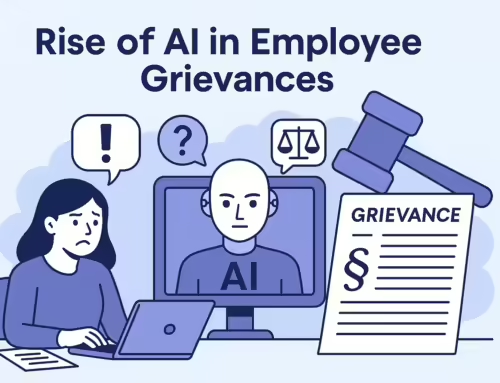Skills matrix’s are one of those things that lot of people have heard of but don’t really get. Skills matrix’s have been around for years and are a common HR tool to help spot employee training needs, skills shortages and potential employee structure changes.
A skills matrix is commonly made up of the following factors:
- Skills – what I need to be able to do – e.g. operate a fork lift truck
- Knowledge – what I need to know to complete a task – e.g. follow organisational H&S procedures
You’ll also find that these are also refereed to competencies and you can also have competency frameworks, buts that’s a whole different blog.
Getting started
To kick off your skills matrix you’ll need to define, probably from the job description or role profile, what skills and knowledge is required in order to achieve the tasks specified.
This part is about being thorough and the we like to tackle this is to sit with the team and walk through a normal day, explaining what they do at each stage, equipment used and knowledge required as they tackle each task.
This part is critical, good analysis here leads to a far more reliable matrix being constructed.
The output should be something like this:
| Task | Skill/Knowledge Required |
| Basic forklift operations | 1. Safety start-up process |
| 2. Routine vehicle maintained | |
| 3. Starting the vehicle | |
| 4. Basic manoeuvring (unladen) | |
| 5. Stopping safely | |
| 6. Emergency stop |
Step two -deciding how to measure ability
Once you have a decent list you can then start thinking about how you are going to assess the team against what you think is important. This is perhaps the most challenging part of the process as it does require a degree of subjectivity in order to reach a conclusion.
Some simple methods of assessment would include:
- Observation of tasks being completed
- 1-2-1 employee review with rater and employee agreeing a score
- Rater completed scores using own experience and appraisal information
For a more objective perspective you could use:
- Skills tests where employees complete a set task and then the output is scored
- Knowledge tests where employees are asked questions
When you have worked out how you plan to measure something, you can then move on to the next step, how you will rate the performance.
Step 3 – rating the employee
Rating ability can be a bit tricky, but generally, the more depth in the rating scale the better the analysis. For example, if you only have yes or no, and count the number of each, you only consider two factors, and may end up with quite skewed results.
The golden rule is try and avoid ratings involving three or 5 choices, as you may find that you end up with a cluster of scores grouped around the middle which will be less useful to you. For example, YES/MAYBE/NO can lead to a high number of maybe’s if people want to avoid being seen as being too positive or too negative.
Here are some suggestions for you:
- Two factors – 1 Not Competent – 2 Competent
- Four Factors – 1 None – 2 Basic – 3 Intermediate – 4 Advanced
- Four Factors – 1 Novice – 2 Semi Skilled – 3 Skilled – 4 Specialist
Whatever you chose make it sensible, easy to understand and above all else relevant to what you are trying to achieve.
Step four – pulling it all together
Once you have picked your method of measurement and how you’re going to score it, then you need to bring it all together into a matrix such as the one below:
| Main Task | Skill or Knowledge Required | Employee 1 Score | Employee 2 Score | Employee 3 Score | Employee 4 Score | Target Score | Group Average |
| Basic forklift operations | 1. Safety start-up process | 2 | 1 | 3 | 4 | 3 | 2.50 |
| 2. Routine vehicle maintained | 3 | 2 | 3 | 4 | 3 | 3.00 | |
| 3. Starting the vehicle | 3 | 1 | 3 | 4 | 3 | 2.75 | |
| 4. Basic manoeuvring (unladen) | 3 | 1 | 4 | 4 | 3 | 3.00 | |
| 5. Stopping safely | 2 | 1 | 3 | 2 | 3 | 2.00 | |
| 6. Emergency stop | 2 | 1 | 4 | 4 | 3 | 2.75 | |
| Employee Total | 15 | 7 | 20 | 22 | 18 | 16.00 | |
| Scales: – 1 Novice – 2 Semi Skilled – 3 Skilled – 4 Expert | |||||||
In the table above we have created a benchmark – target score – so that we know what good would look like and can then assess how close or far away the team are.
From the table it can be seen that employee 2 has a high degree of development need, employee 1 is almost there (only 3 points off the target) and needs to brush up in one area, employee three is competent and employee four could be a great internal trainer for employee 1.
Whilst the above is a bit simplistic it does demonstrate how a matrix can look.
How to use the outcomes of the skills matrix
Once you have all your factors plotted and employees assessed it will help you to:
- Identify those ready to take on more skills
- Identify those ready for promotion
- Identify those that need additional support
- Identify common training needs, such as ‘Stopping Safely’ in the example above which had the lowest average score
- Help set pay levels between employees performing the same tasks
- Identify what pay increment an employee should receive where you set scores as a threshold to be achieved for a set % pay increase
- Identify employees that maybe at risk if restructuring or downsizing
Where this becomes really useful is if you repeat the activity after 12 months to see if the scores have improved or stayed the same.
We specialise in developing easy to implement HR solutions for organisations of all sizes. If you have a question or would like some help, get in touch.




